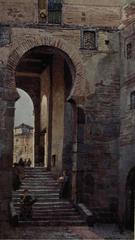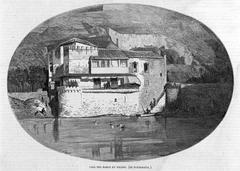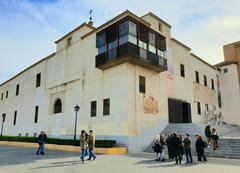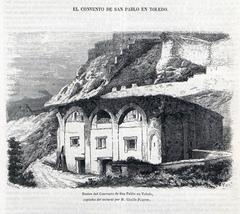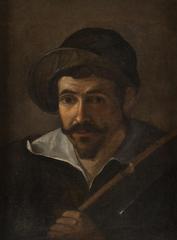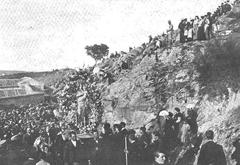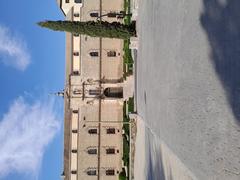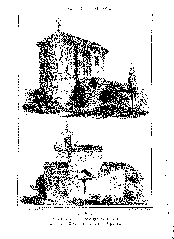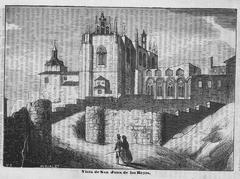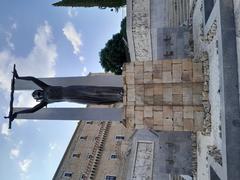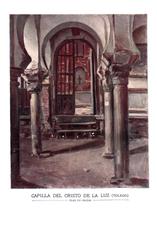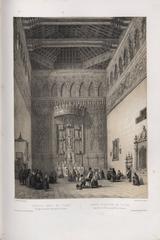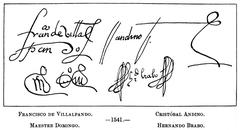Convento de San Pedro Mártir, Toledo, Spain: Visiting Hours, Tickets, and Travel Guide
Date: 04/07/2025
Introduction
The Convento de San Pedro Mártir is a significant historical and cultural monument in the heart of Toledo, Spain. Founded in the early 13th century by the Dominican Order and later relocated within the city walls in 1407, the convent embodies the multi-layered religious, artistic, and academic heritage of Toledo—a city celebrated for its coexistence of Christian, Islamic, and Jewish traditions. Today, the convent forms part of the University of Castilla-La Mancha, seamlessly blending centuries-old architecture with vibrant academic life.
This comprehensive guide details the convent’s rich history, architectural highlights, visiting hours, ticketing information, accessibility, and practical travel tips. Whether you are a history enthusiast, architecture lover, or a curious traveler, this article will help you plan a rewarding visit to one of Toledo’s most treasured sites.
Official information and the latest updates can be found on the University of Castilla-La Mancha, Toledo tourism portal, and specialized heritage sites like cultura.castillalamancha.es and conventosdetoledo.com.
Table of Contents
- Overview and Historical Significance
- Origins and Medieval Expansion
- Architectural Evolution
- Modern History and Current Use
- Practical Visitor Information
- Notable Features
- FAQ
- Plan Your Visit: Final Recommendations
- References
Overview and Historical Significance
The Convento de San Pedro Mártir is a remarkable testament to Toledo’s spiritual, intellectual, and artistic legacy. Founded by the Dominicans in 1230, it rapidly became one of the city’s most influential religious institutions, housing a prominent printing press and serving as a hub for theological and philosophical study. The complex showcases a harmonious blend of Mudéjar, Gothic, Renaissance, and Baroque styles, reflecting the city’s historical evolution.
Today, after careful restoration, the convent houses the Faculty of Legal and Social Sciences of the University of Castilla-La Mancha, providing a unique opportunity to experience living history within an academic setting.
Origins and Medieval Expansion
Initially established outside the city walls in the Huerta del Granadal, the Dominicans relocated the convent inside Toledo in 1407, thanks to a donation from Doña Guiomar de Meneses (cultura.castillalamancha.es). Over the 15th and 16th centuries, the convent expanded, acquiring adjacent properties and growing into one of the largest and wealthiest religious houses in the city (conventosdetoledo.com).
During this period, the Dominicans played a vital role in Toledo’s religious, educational, and cultural life, attracting theologians, philosophers, and scholars from across Spain.
Architectural Evolution
Gothic and Mudéjar Foundations
The earliest surviving architecture in the convent dates from the early 15th century and is characterized by Mudéjar elements—including brickwork, horseshoe arches, and decorative tilework. The Mudéjar tower, reminiscent of Islamic minarets, is a standout feature (turismocastillalamancha.es). Gothic influences are evident in pointed arches and ribbed vaults throughout the cloisters and church.
Renaissance and Baroque Additions
The 16th-century expansion included the Patio de los Generales, built in the Renaissance style by Hernán González de Lara under plans by Alonso de Covarrubias. The church, begun in 1605, features a post-Herrerian style, with a monumental façade by Juan Bautista Monegro and sculptures by Jaques del Rey.
Baroque enhancements in the 17th and 18th centuries added ornate chapels, dynamic cornices, and sophisticated plasterwork, particularly in the sacristy and side chapels (toledo.es).
Artistic Heritage
The convent’s interiors once held celebrated altarpieces, choir stalls, frescoes, and funerary monuments. Notably, the main altarpiece and choir stalls were crafted by Giraldo de Merlo, with paintings by Juan Bautista Maíno (now in the Museo del Prado). The church is also home to tombs of the Counts of Fuensalida, the Counts of Mélito, María de Horozco, inquisitor Pedro Soto Cameno, and the poet Garcilaso de la Vega (turismocastillalamancha.es).
Modern History and Current Use
The convent’s fortunes waned after the Spanish court relocated to Madrid in the 16th century. The Desamortización de Mendizábal in 1836 led to secularization, and the building served various functions—including as a military college, hospital, orphanage, and museum (conventosdetoledo.com). In the 1990s, a major restoration transformed the site into the Faculty of Legal and Social Sciences at the University of Castilla-La Mancha, preserving its historic character.
Since 1997, the convent has been protected as a Bien de Interés Cultural (Asset of Cultural Interest) (toledoguiaturisticaycultural.com).
Practical Visitor Information
Visiting Hours and Tickets
- Hours: Typically open Tuesday to Sunday, 10:00 AM to 6:00 PM. Closed Mondays and public holidays. Hours may vary—check the official university website or Toledo tourism portal for up-to-date schedules.
- Tickets: Standard admission is around €3. Students, seniors, and Toledo residents may enter free. Guided tours require advance booking and may have a minimum group size.
Accessibility
Most main areas are accessible, with ramps and designated pathways. Some historic sections may have limited accessibility due to preservation constraints.
Getting There
- Address: Calle de San Pedro Mártir, 45002 Toledo.
- By Public Transport: Local buses stop at Plaza de Zocodover; the convent is a short walk away.
- By Car: Parking is limited in the old town; use Parking Corralillo de San Miguel or Parking Safont (10–15 minutes’ walk).
Guided Tours
Guided tours (45–60 minutes) are available, often in Spanish, with other languages by request. They cover the cloisters, church, chapels, and select university spaces. Book in advance through the University of Castilla-La Mancha or Toledo tourism portal.
Visitor Tips
- Wear comfortable shoes (cobblestone streets and uneven floors).
- Dress modestly (cover shoulders and knees).
- Photography is allowed without flash; tripods may be restricted.
- Plan at least 1–1.5 hours for your visit.
- Visit early or late in the day to avoid crowds.
Notable Features
- Cloisters and Courtyards: Patio Real, Patio del Silencio, and Patio de los Naranjos offer tranquility and architectural beauty.
- Mudéjar Tower: A rare example of 15th-century Mudéjar design.
- Funerary Monuments: Tombs of notable Toledans, including Garcilaso de la Vega.
- Artistic Remnants: Frescoes, Renaissance altarpieces, and Baroque chapels.
- Adaptive Reuse: Experience the blend of historical and contemporary academic life.
Frequently Asked Questions (FAQ)
Q: Is the Convento open every day?
A: Usually open Tuesday to Sunday, closed Mondays and public holidays. Confirm before visiting.
Q: Are guided tours available in English?
A: Yes, on request. Book in advance.
Q: Is the convent fully wheelchair accessible?
A: Most main areas are accessible; some historic sections may present challenges.
Q: Can I visit without a guided tour?
A: Some areas may only be accessible via guided tours for preservation reasons.
Q: Can I take photographs inside?
A: Yes, but flash and tripods are often restricted.
Plan Your Visit: Final Recommendations
The Convento de San Pedro Mártir offers a captivating journey through Toledo’s layered history and architectural splendor. Its central location makes it ideal for exploring nearby landmarks such as the Iglesia de Santo Tomé and the Museo de los Concilios y la Cultura Visigoda. For an enhanced experience, consider booking a guided tour and downloading the Audiala app for self-guided explorations and interactive maps.
For the latest information on visiting hours, tickets, and upcoming events, consult the University of Castilla-La Mancha, Toledo tourism portal, and cultura.castillalamancha.es.
References
- This guide draws on official and authoritative sources for historical and visitor information. For further reading and updates, see:
Note: High-quality images with optimized alt tags and interactive maps are recommended for the web version to enhance user experience and search engine optimization.
